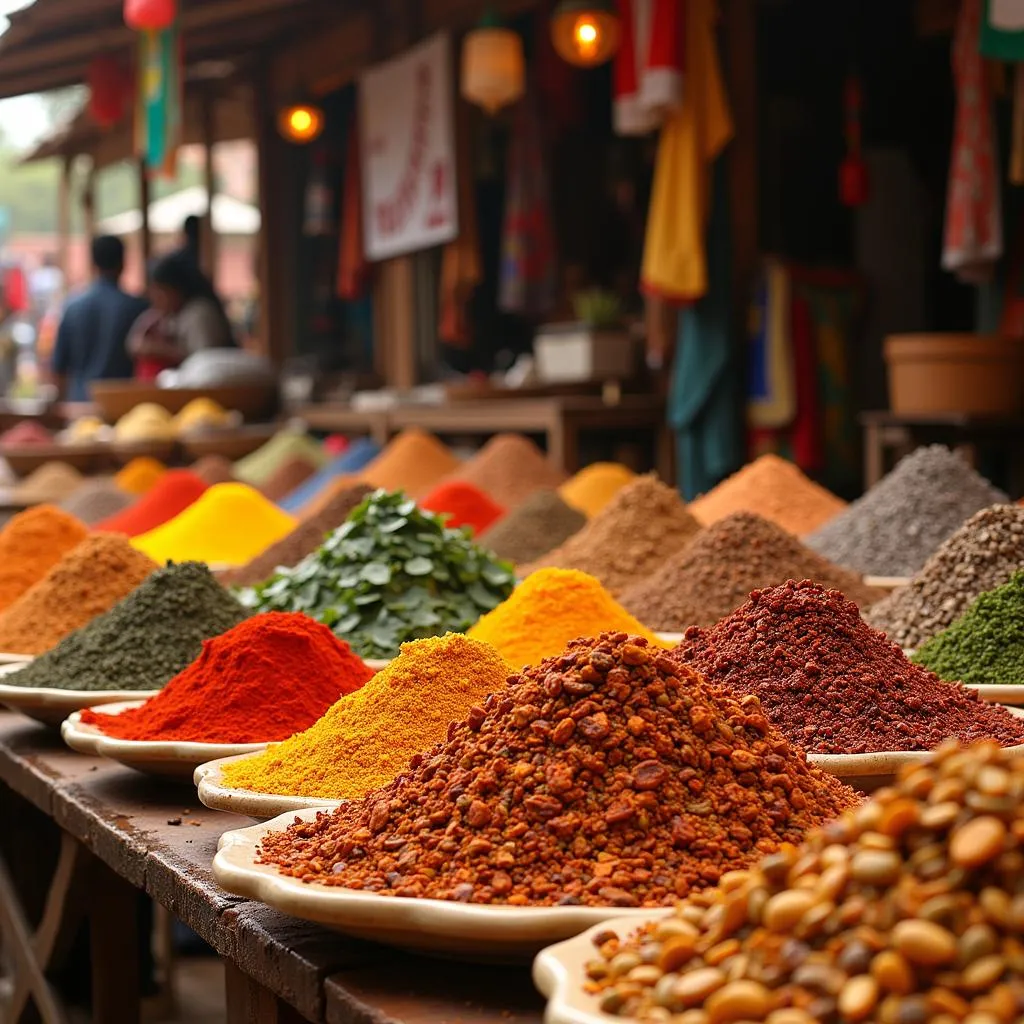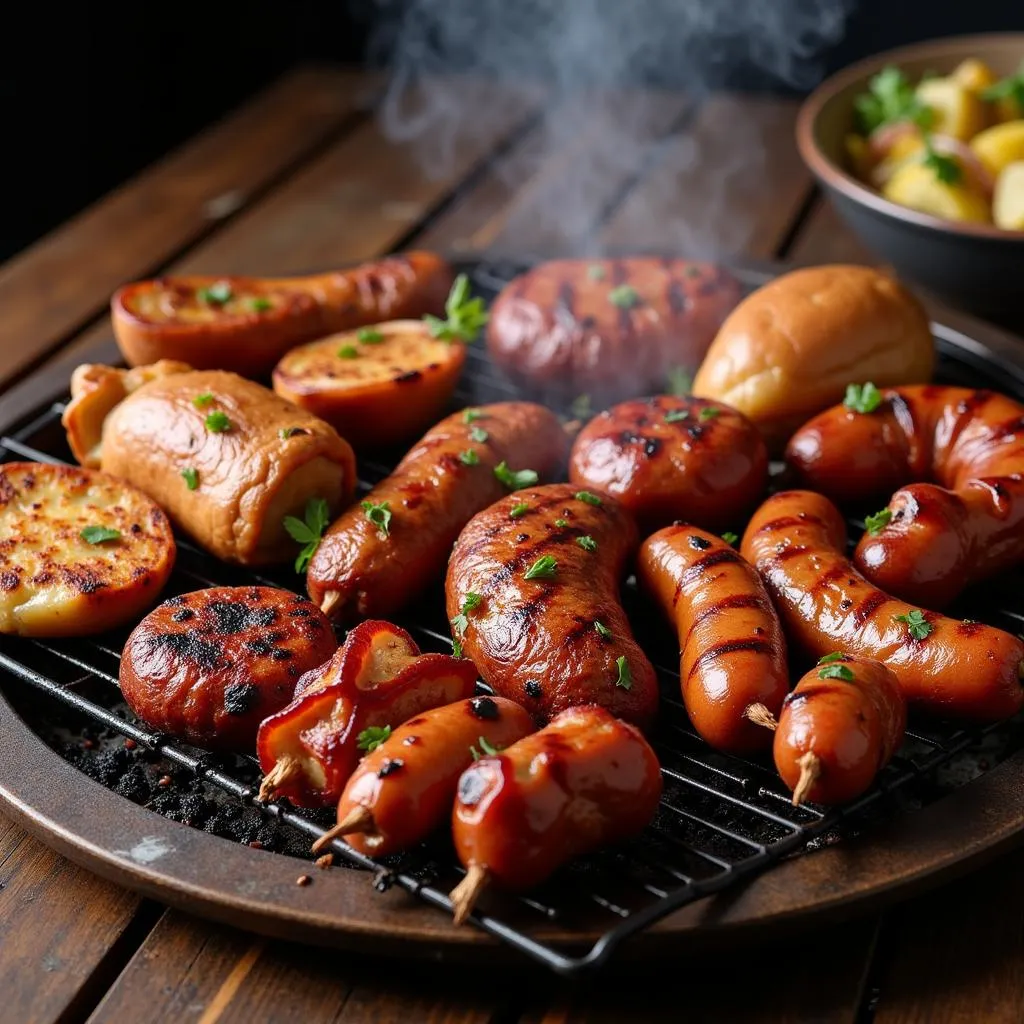A Taste of Africa: Exploring the World of African Canapes
African Canapes offer a delightful journey for your taste buds, showcasing the continent’s diverse culinary heritage in bite-sized portions. From the spicy flavors of North Africa to the rich, earthy tones of the south, these miniature culinary creations are perfect for any occasion, offering a glimpse into the heart of African cuisine.
Unveiling the History and Significance of Canapes in African Cuisine
While the concept of canapes might seem like a modern culinary trend, their roots in Africa can be traced back centuries. Traditionally, small bites and finger foods have always been an integral part of African hospitality and communal dining experiences.
Across the continent, different cultures have their own unique versions of canapes, often served during festivals, ceremonies, and gatherings. These bite-sized delicacies reflect the resourcefulness of African cooks, utilizing readily available ingredients like plantains, cassava, lentils, and spices to create flavorful and visually appealing treats.
 Vibrant African spice market
Vibrant African spice market
A Journey Through Flavors: Regional Variations of African Canapes
One of the most fascinating aspects of African canapes is the sheer variety of flavors and ingredients used across different regions. Let’s embark on a culinary journey to explore some of the regional variations:
North Africa: A Fusion of Mediterranean and Arabic Influences
North African canapes are characterized by bold flavors and aromatic spices. Think fragrant tagines, savory pastries, and dips like hummus and baba ghanoush. Some popular options include:
- Briouats: Crispy filo pastries filled with savory fillings like spiced meat, seafood, or cheese.
- Merguez Sausages: Spicy lamb sausages served with harissa paste, a fiery chili condiment.
- Zaalouk: A smoky eggplant dip flavored with tomatoes, garlic, and spices, perfect with crusty bread.
 Moroccan tea ceremony with traditional pastries.
Moroccan tea ceremony with traditional pastries.
West Africa: Celebrating the Bounty of Land and Sea
West African canapes highlight the region’s love for hearty stews, seafood, and starchy staples. Expect vibrant colors, bold spices, and a mix of textures. Here are some examples:
- Puff Puff: Deep-fried dough balls, often served with spicy pepper sauce, a popular street food snack.
- Kelewele: Fried plantains seasoned with ginger, chili, and spices, offering a sweet and spicy kick.
- Fish Pies: Small pastries filled with a flavorful mixture of fish, tomatoes, onions, and spices.
East Africa: A Tapestry of Swahili and Indian Influences
East African canapes showcase the region’s unique blend of Swahili, Indian, and Arabic culinary traditions. Expect fragrant rice dishes, flavorful meat skewers, and a generous use of coconut milk and spices. Some popular choices include:
- Samosas: Crispy triangular pastries filled with spiced potatoes, peas, and sometimes meat, a beloved street food snack.
- Mshikaki: Marinated and grilled meat skewers, often beef or chicken, seasoned with Swahili spices.
- Coconut Prawns: Succulent prawns cooked in a creamy coconut sauce flavored with ginger, garlic, and spices.
Southern Africa: Embracing the Flavors of the Rainbow Nation
Southern African canapes reflect the region’s diverse culinary landscape, drawing inspiration from indigenous, Dutch, and Malay influences. Expect meaty treats, flavorful sauces, and a love for grilling and barbecuing. Some popular options include:
- Biltong: Cured and air-dried meat, similar to jerky, a popular snack and accompaniment to drinks.
- Boerewors Rolls: Grilled boerewors sausage served in a bread roll with chutney or mustard.
- Bunny Chow: A hollowed-out loaf of bread filled with a spicy curry, a Durban specialty.
 South African braai with various grilled meats and sides.
South African braai with various grilled meats and sides.
Beyond the Bite: The Cultural Significance of African Canapes
African canapes are much more than just delicious snacks; they represent the continent’s rich cultural heritage and traditions of hospitality. They symbolize the joy of sharing a meal with loved ones, celebrating special occasions, and showcasing the bounty of local ingredients.
“Food is an integral part of African culture. It’s not just about sustenance; it’s about community, celebration, and storytelling,” says Chef Abena, a renowned Ghanaian chef specializing in traditional African cuisine. “Canapes, in particular, embody this spirit of sharing and togetherness.”
Conclusion: Embark on a Flavorful Adventure with African Canapes
From the bustling markets of Marrakesh to the vibrant street food scene in Lagos, African canapes offer a tantalizing glimpse into the continent’s diverse culinary landscape. These bite-sized delights are a testament to the creativity and ingenuity of African cooks, who transform simple ingredients into flavorful and visually stunning creations. So, next time you’re looking for a unique and flavorful culinary experience, explore the world of African canapes and embark on a journey for your taste buds.

